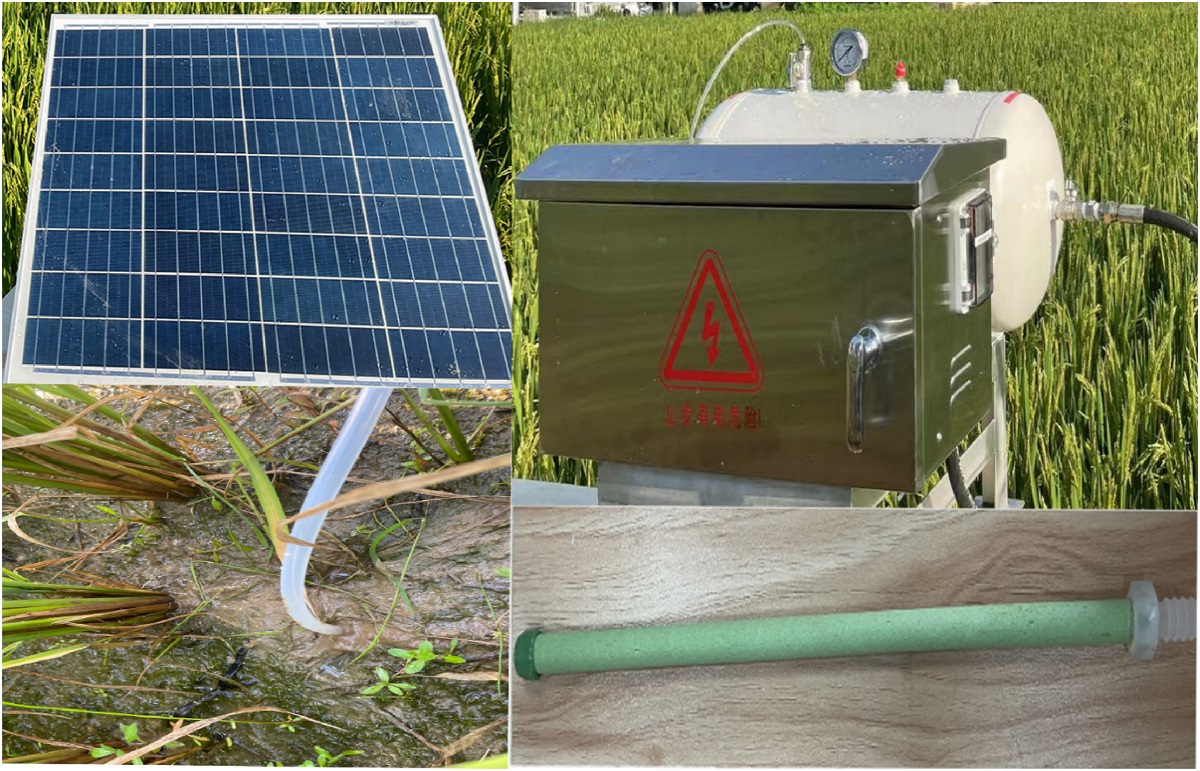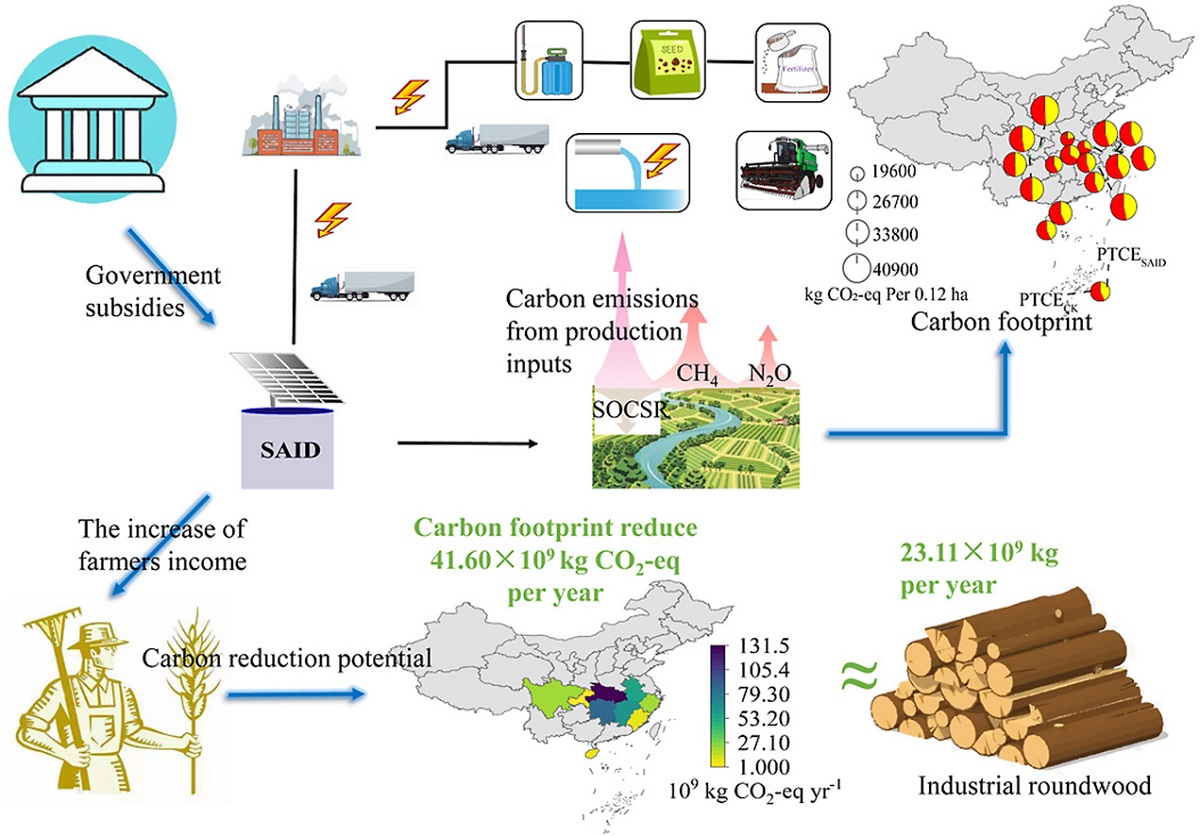南湖新闻网讯(通讯员 冯莹)近日,我校植物科学技术学院低碳稻作团队联合东北农业大学土壤保护与修复重点实验室研制了稻田土壤注气增氧仪(soil air injection device,SAID),并评估了使用该设备减少我国稻田碳排放的潜力。研究结果以“Introducing soil air injection device to reduce carbon footprint of rice production system in China”为题发表在Journal of Cleaner Production 期刊上。

稻田土壤注气增氧仪
稻田固碳减排关系到“双碳”目标的达成,稻田溶氧量的升高可抑制产甲烷菌代谢,并通过激发甲烷氧化菌活动促进甲烷氧化,围绕这一碳减排机理,干湿交替灌溉、增氧灌溉等稻田增氧管理技术不断受到关注。为进一步挖掘增氧管理技术的稻田固碳减排潜力,研究团队研制了稻田土壤注气增氧仪,并在湖北、湖南等主要稻作区投入生产试验。稻田土壤注气增氧仪主要由空气压缩机,贮气罐和注气矛三部分组成,仪器采用太阳能和锂电池混合能源供应。

稻田土壤注气增氧法碳足迹及经济效益分析
该研究基于生命周期的碳足迹评估结果显示,土壤注气增氧仪在稻田的碳减排潜力远高于其生产、运行及回收所产生的碳排放(4.51‒241.95%)。经济效益核算和KAP(knowledge-attitude-practice)分析表明,经济效益较低、投资回报周期长等因素可能会导致该设备及方法的推广应用受限,适量的政府补贴可有效促进该增氧管理技术在稻田生产中发挥固碳减排潜力。区域碳足迹核算结果表明,在适量的政府补贴下(142.80‒349.95 yuan SAID‒1 yr‒1),土壤注气增氧仪可使中国稻田的碳排放量每年减少约41.60 TgCO2-eq。该研究表明土壤注气增氧法具有较大的稻田碳减排潜力。
我校植物科学技术学院博士生汤计超为论文第一作者,东北农业大学刘天奇副教授为论文通讯作者,我校曹凑贵教授、李成芳副教授等参与了该研究的指导。该研究得到“十四五”国家重点研发计划“长江中下游坡耕地红黄壤与中低产稻田产能提升技术模式及应用”项目和湖北省重点研发计划项目的资助。
审核人 刘天奇
【英文摘要】
Improving soil aeration in paddy fields using mechanical device reduces methane (CH4) emissions, whereas it also increases the contribution of other sources (device production, agricultural inputs, etc.). Here, this study applied the life cycle assessment (LCA) method to evaluate the carbon footprint of a soil air injection device (SAID) in rice field. We further analyzed the prospects of this device in promoting carbon emission reduction in China’s main rice-producing areas, which was combined with economic benefit calculation and revised knowledge-attitude-practice (KAP) model. Results showed that the reduction of net carbon emissions from paddy fields under SAID treatment was 4.51–241.95% higher than the total carbon emissions from the production, transportation, operation, and recycling of SAID. The economic output of using SAID in rice fields could just offset the cost of it. With reasonable government subsidies (142.80–349.95 yuanSAID−1 yr−1), SAID can reduce carbon emissions from Chinese rice fields by ~ 41.60 Tg CO2-eq yr−1. This study suggests that using SAID in some rice planting areas in China may be an effective way to reduce carbon emissions.